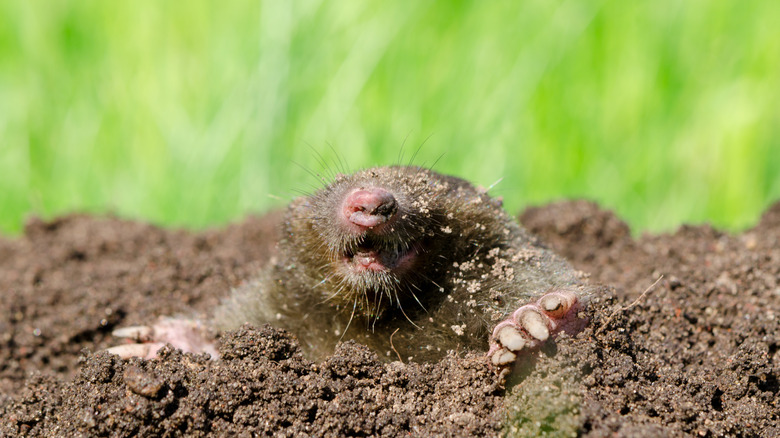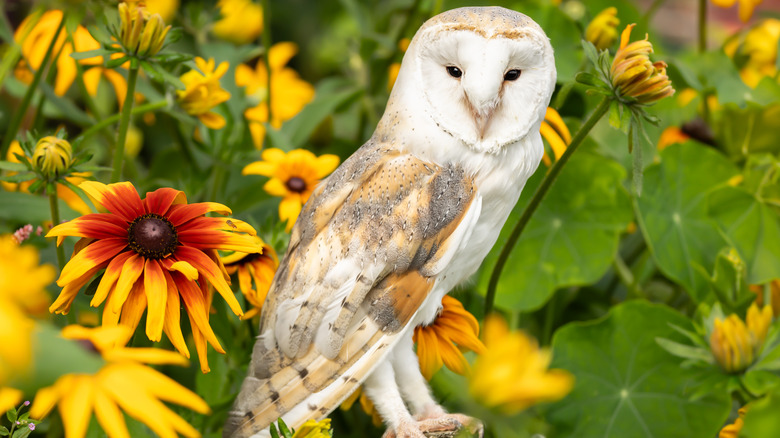The Simple Addition That Can Help Keep Moles Away From Your Yard Naturally
Trying to get rid of moles in your yard can feel a lot like playing Whac-a-Mole — just when you think you've solved the problem, another molehill or tunnel appears somewhere else. This may leave you wondering how to take care of mole holes in your lawn as the burrowing mammals create multiple tunnels in your yard, searching for insects and larvae to eat. Traps and poisons can rid your yard of these pesky rodents. But if you are looking for a more natural way to get rid of moles in your backyard and garden, you could consider enticing a helpful owl to take up residence on your property.
These mostly nocturnal predators primarily feed on small rodents like moles, voles, and mice; a barn owl can consume three to four small rodents in one night. Additionally, during breeding season, they'll feed each owlet (they typically lay about three to four eggs a season)several small mammals a day. Imagine how quickly one owl could eliminate your rodent problem! So if you're looking to get of moles — and are interested in supporting your local owl population — spreading out a welcome mat for these majestic raptors might be your best tactic.
How to attract owls to your yard
Now that you know owls can help tackle your mole problem, the challenge is encouraging them to make your yard their home. Luckily, a popular gardening trend called meadowscaping might be just the ticket to keeping your lawn mole-free. This approach is gaining popularity as homeowners seek eco-friendly landscaping ideas that support local wildlife and reduce maintenance. Planting a mini meadow in part of your yard can create an ideal habitat for owls, which favor hunting in grassy areas. A bonus: once established, your meadow will need little mowing or watering, helping reduce your workload. Before planting, check your local regulations, as some municipalities restrict or prohibit meadows. You'll also want to prevent it from encroaching neighbors' lawns — using pavers or a strip of turf grass as a boundary should work well.
To create your own meadow garden, plant a mix of grasses like Virginia Wild Rye (Elymus virginicus) and Big Bluestem (Andropogon gerardii) for year-round cover (both are hardy in USDA Zones 3 to 9). Add native wildflowers, such as purple coneflower (Echinacea purpurea) and Black-eyed Susans (Rudbeckia hirta) to add color and attract pollinators. For shadier spots, choose Pennsylvania sedge (Carex pensylvanica) and Wild Geranium (Geranium maculatum).
But planting your own meadow might not be enough to make an owl feel at home; you should also be sure to keep your yard dark at night to facilitate their hunting. Provide them with shelter, such as trees or a nesting box, and a clean water source, such as a large birdbath. With the right mix of tactics and plants, you can create a perfect habitat to attract owls, your natural mole patrol.

